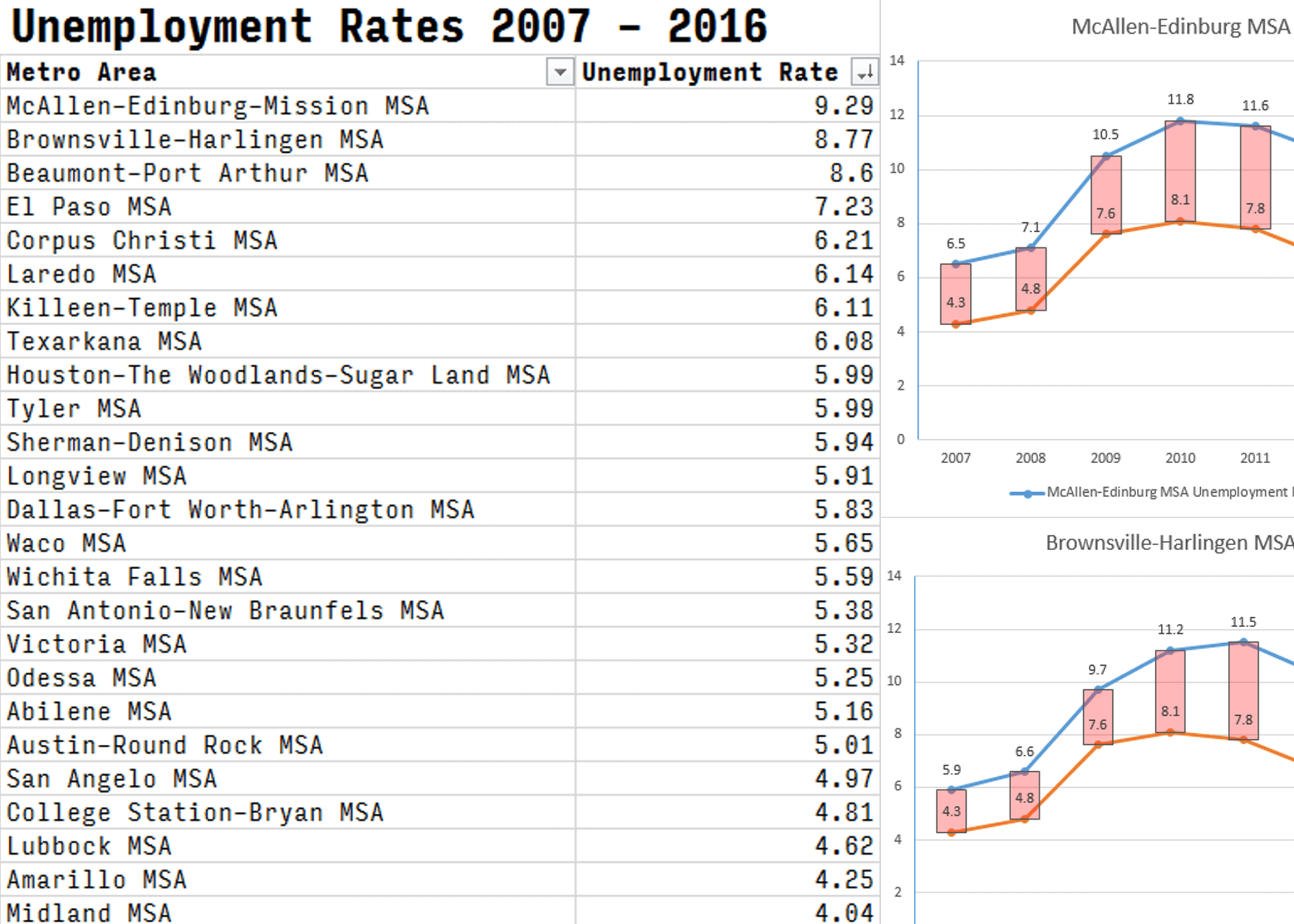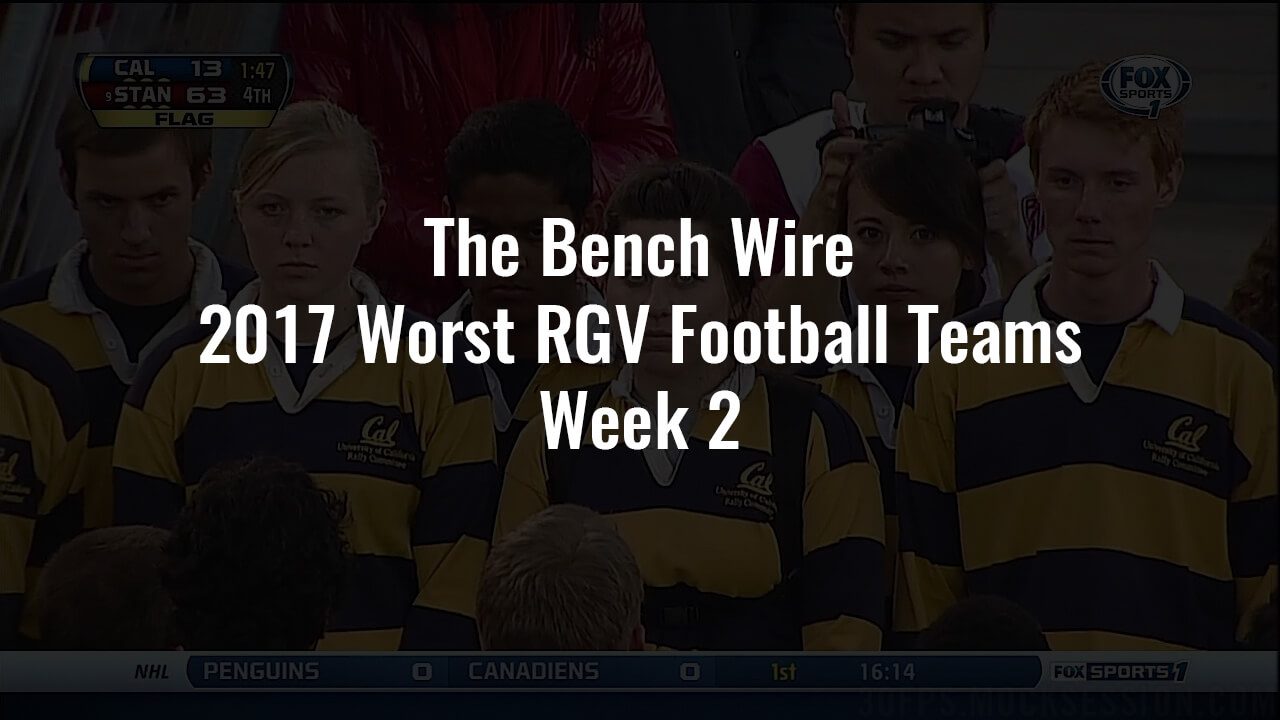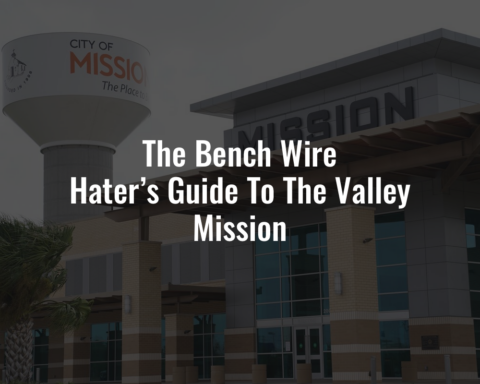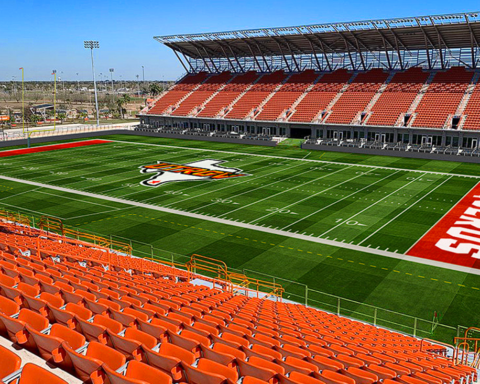The Texas Workforce Commission sent out a press release earlier this week entitled “Texas Economy Adds 5,500 Jobs In August.” None of those jobs, seemingly, made their way to the Rio Grande Valley as McAllen-Edinburg Metro’s unemployment rose from 7.6% to 8.0% between July and August and Brownsville-Harlingen Metro’s unemployment rose from 7.0% to 7.3% in the same time period. Collectively, the Rio Grande Valley scored the highest unemployment rate for the month of August in the entire state.
While this may not be as surprising for most of us who live here, actually digging into the numbers reveals some truly staggering figures.
Analyzing data available by the Texas Workforce Commission via Tracer2, the Rio Grande Valley’s unemployment problem has persisted for a solid decade. Between 2007 and 2016, the Rio Grande Valley unemployment rate tops all other metro areas in that time span.
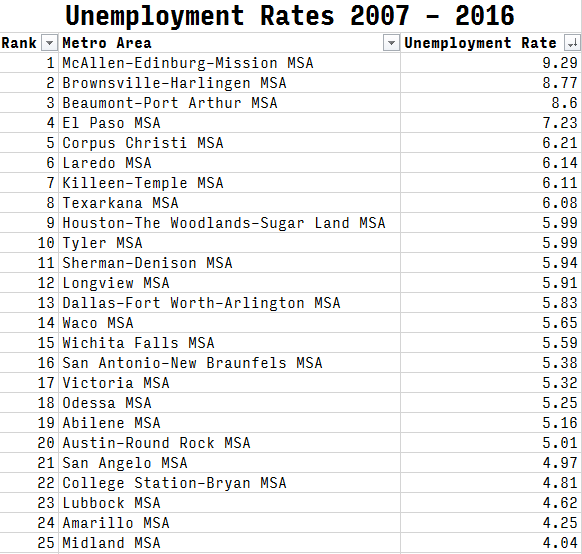
Taking each metro area’s unemployment stats year-by-year, the McAllen-Edinburg and Brownsville-Harlingen metro areas make up 12 of the state’s 25 worst years by metro area, including 10 of the worst 14.
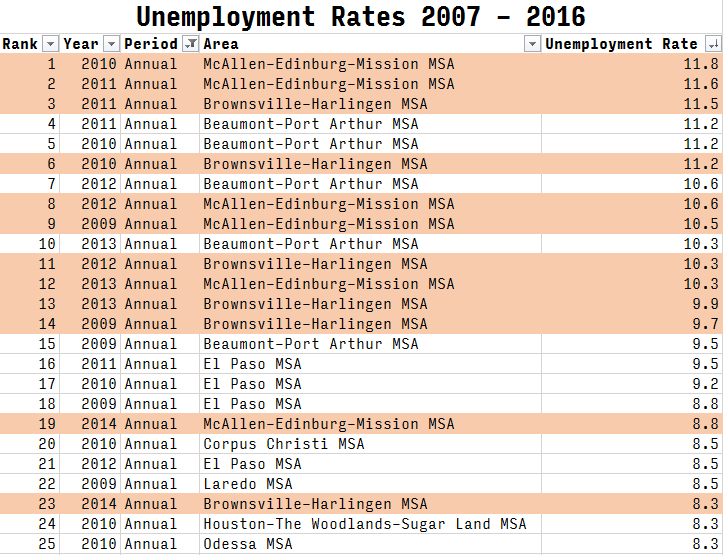
Comparing the Valley’s trends with the state’s unemployment average through the same time period, you’ll find that not once in the last 10 years has the Valley even come close to the state average in curbing unemployment.
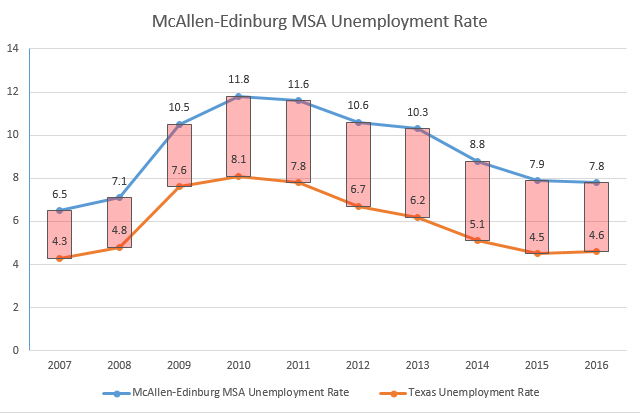
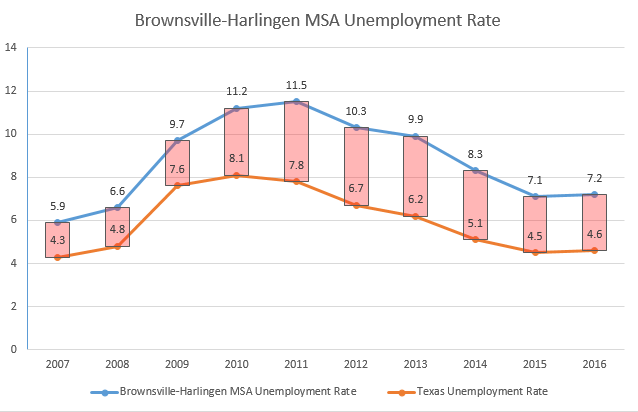
Without hard data or an explorational survey, we really can only speculate just why exactly this area suffers from demonstratively higher unemployment rates than the rest of the state. We’ve reported before that the Rio Grande Valley has the poorest counties in Texas, with the lowest wages paid out and the lowest percentage of persons with a bachelor’s degree, all of which may explain why the Valley offers so few high-paying high-skill jobs, however it does nothing to explain why most of our uneducated, low-skilled population aren’t able to find employment.
One theory is that it may be possible that private industries in the manual labor and service sectors, which make up a sizeable bulk of jobs that the area demands, could be taken up by those who are undocumented and are willing to work for less, if not the minimum wage then certainly the next qualified applicant, and off the books to keep companies away from payroll taxes.
Another theory is that the Valley is simply a welfare state and that the current welfare system does nothing to incentivize or discourage persons away from state-aid dependence; however one could also argue that many are on welfare because there simply aren’t enough jobs to sustain a living in the area. With the sharp decline in retail sales, stores like Macy’s, Sears, JCPenny, and other larger big-box staples have laid off thousands of workers and shuddered up stores all across the Valley, leaving little to those seeking low-skill service jobs.
The takeaway here is this:
If you have a job in the Valley and you’re considering jumping ship, you may want to reconsider because there are no indicators of this situation getting any better in the near future.

